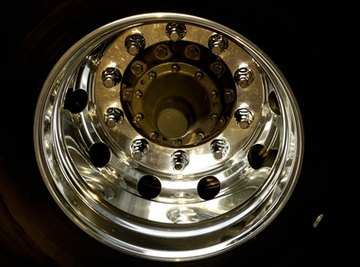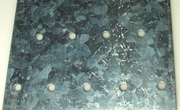
Anodizing creates a hard coating of metal oxides on the surface of aluminum, protecting the aluminum from corrosion or abrasion. Occasionally, anodized coatings are damaged. When repairing anodized aluminum, first determine whether the base metal is damaged or whether only the metal oxide coating is damaged. If the base metal coating is damaged, you will have to deanodize the surface, then repair the base metal by sanding or buffing. If only the metal oxide coating is damaged, you can repair it through brush anodizing, a portable anodizing process.
Repairing Damaged Base Metal
Wear chemical-resistant gloves, a lab coat and goggles as a precaution when handling acids. Strip off the anodized coating in a stripping solution bath. Pour deionized water into a stainless steel bath. Heat, by gas firing, until the water is between 140 and 160 degrees Celsius. Add nitric and oxalic acid until the total volume is around 380 gallons. You should be able to see through several feet of solution.
Add anodized aluminum parts. Within 15 minutes, metal oxides should be removed.
Remove aluminum parts from the bath, and rinse with deionized water. Buff or sand to repair scratches and gouges; reanodize, if necessary.
Repairing Anodization Coating
- Stainless steel bath
- Deionized water
- Nitric acid
- Oxalic acid
- Gas firing apparatus
- Masking tape
- Sodium hydroxide
- Tubular cathode rod
- Sulfuric acid
- Tape
Mask off the area around the surface to be repaired, using masking tape.
Use sodium hydroxide to remove the damaged metal oxide coating from the surface. Flush away the sodium hydroxide with deionized water.
Pass sulfuric acid through a tubular cathode rod, while applying the cathode rod to the metal surface to be reanodized. The cathode rod will release positive hydrogen ion charges at the surface, while the surface itself will act as an anode, accumulating metal oxides. Continue until metal oxides have accumulated to the thickness characteristic of the undamaged surface.
Things You'll Need
About the Author
Tricia Lobo has been writing since 2006. Her biomedical engineering research, "Biocompatible and pH sensitive PLGA encapsulated MnO nanocrystals for molecular and cellular MRI," was accepted in 2010 for publication in the journal "Nanoletters." Lobo earned her Bachelor of Science in biomedical engineering, with distinction, from Yale in 2010.
Photo Credits
jante image by Jerome Dancette from Fotolia.com
